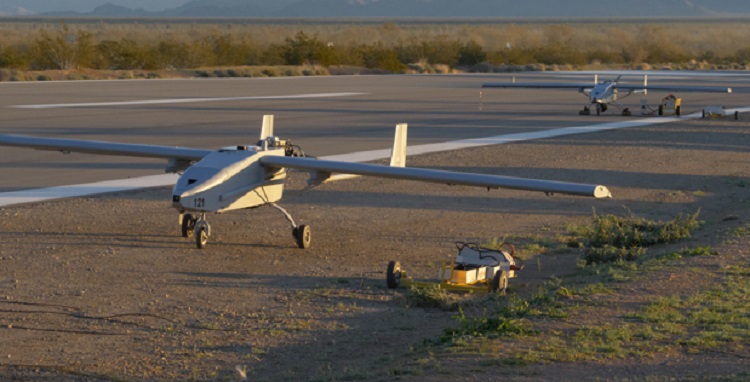DARPA tests CODE program for collaborative autonomous systems

In February, a swarm of unmanned aerial vehicles equipped with DARPA’s Collaborative Operations in Denied Environment system, or CODE, successfully carried out mission objectives, even when communications were offline and GPS was unavailable, the agency announced March 22.
One-by-one, six RQ-23 Tigersharks lifted off, fitted with an array of sensors onboard. Next to the runway at the U.S. Army’s Yuma Proving Ground, the mission team inside a small operations center tracked the aircraft and as many as 14 additional virtual planes on an aerial map. The capstone demonstration paired program performer Raytheon’s software and autonomy algorithms and Johns Hopkins University Applied Physics Laboratory’s White Force Network to create a realistic, live/virtual/constructive test environment. During four demonstration runs, the team activated a variety of virtual targets, threats, and countermeasures to see how well the Tigersharks could complete their objectives in suboptimal conditions.
“Exactly how the aircraft continue to work together in degraded conditions is the most challenging aspect of this program,” said Scott Wierzbanowski, the DARPA program manager for CODE in the Tactical Technology Office. “Current procedures require at least one operator per UAV in the field. Equipped with CODE, one operator can command multiple aircraft; and in a denied environment, the aircraft continue toward mission objectives, collaborating and adapting for deficiencies.”
Before, if operators lost communications with a UAV, the system would revert to its last programmed mission. Now, under the CODE paradigm, teams of systems can autonomously share information and collaborate to adapt and respond to different targets or threats as they pop up.
“CODE can port into existing UAV systems and conduct collaborative operations,” said Wierzbanowski. “CODE is a government-owned system, and we are working closely with our partners at the Air Force Research Laboratory and Naval Air Systems Command to keep each other informed of successes and challenges, and making sure we don’t replicate work. In the end, our service partners will leverage what we’ve done and add on what they need.”
The Tigersharks employed in the demonstration are surrogate assets for CODE. Each has about one-tenth the speed and performance of the aircraft planned for integration, but shows traceability to larger platforms. Constructive and virtual threats and effects presented by the White Force Network are appropriately scaled to the Tigersharks’ capabilities.
Source: DARPA







